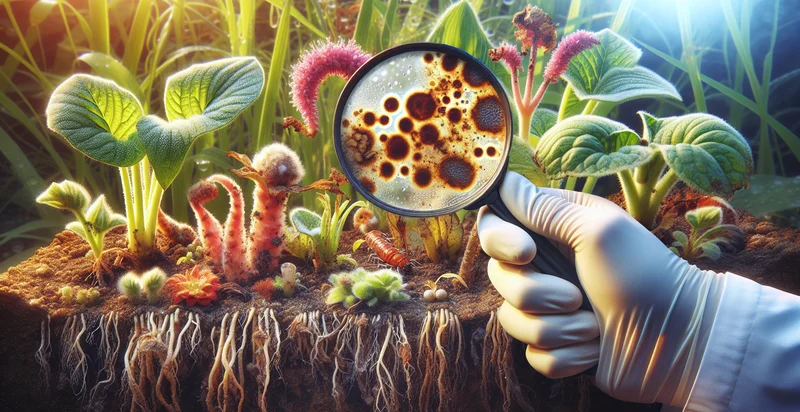Identify plant diseases by description
using AI
Below is a free classifier to identify plant diseases by description. Just input your text, and our AI will predict what plant disease it is - in just seconds.

Contact us for API access
Or, use Nyckel to build highly-accurate custom classifiers in just minutes. No PhD required.
Get started
import nyckel
credentials = nyckel.Credentials("YOUR_CLIENT_ID", "YOUR_CLIENT_SECRET")
nyckel.invoke("plant-diseases-by-description", "your_text_here", credentials)
fetch('https://www.nyckel.com/v1/functions/plant-diseases-by-description/invoke', {
method: 'POST',
headers: {
'Authorization': 'Bearer ' + 'YOUR_BEARER_TOKEN',
'Content-Type': 'application/json',
},
body: JSON.stringify(
{"data": "your_text_here"}
)
})
.then(response => response.json())
.then(data => console.log(data));
curl -X POST \
-H "Content-Type: application/json" \
-H "Authorization: Bearer YOUR_BEARER_TOKEN" \
-d '{"data": "your_text_here"}' \
https://www.nyckel.com/v1/functions/plant-diseases-by-description/invoke
How this classifier works
To start, input the text that you'd like analyzed. Our AI tool will then predict what plant disease it is.
This pretrained text model uses a Nyckel-created dataset and has 22 labels, including Anthracnose, Bacterial, Blight, Canker, Environmental Stress, Fungal, Induced Damage, Insect Damage, Leaf Spot and Mosaic.
We'll also show a confidence score (the higher the number, the more confident the AI model is around what plant disease it is).
Whether you're just curious or building plant diseases by description detection into your application, we hope our classifier proves helpful.
Related Classifiers
Need to identify plant diseases by description at scale?
Get API or Zapier access to this classifier for free. It's perfect for:
- Agricultural Advisory Services: Farmers can utilize the plant disease classification function to receive quick and accurate identifications of potential plant diseases based on their descriptions. This allows for timely intervention and treatment recommendations, ultimately improving crop yield and reducing losses.
- Extension Education Programs: Agricultural extension workers can incorporate this tool into educational programs to teach farmers and agricultural students how to recognize and describe plant diseases. This promotes better understanding and proactive management of plant health issues, fostering a more resilient agricultural community.
- E-Commerce for Agricultural Products: Online marketplaces for seeds, fertilizers, and pesticides can integrate this classification function to guide users in identifying plant diseases before making purchases. By offering tailored suggestions for disease management products, this enhances customer satisfaction and supports better plant care.
- Research and Development: Researchers can employ this classification function to analyze descriptions of plant diseases, leading to a more extensive database of disease characteristics. This information can support the development of disease-resistant plant varieties and advance agricultural biotechnology.
- Mobile Applications for Plant Care: Developers of mobile applications focused on gardening and plant care can include this classification function to assist users in diagnosing plant issues. By providing users with immediate feedback on plant health, the app enhances user engagement and ensures better plant management practices.
- Garden Centers and Nurseries: Retailers in the horticulture industry can use this classification function to train staff on identifying plant diseases based on customer descriptions. Improved staff knowledge can enhance customer service, leading to better guiding of customers toward suitable solutions for their plant health concerns.
- Public Health Monitoring: Agricultural and public health officials can leverage this tool to monitor and respond to plant disease outbreaks that might affect food supplies. By classifying diseases effectively, officials can facilitate quicker responses, ensuring food security and maintaining public health standards.


